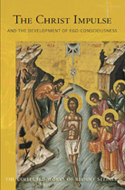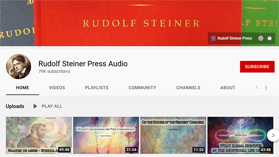
-
THE CHRIST IMPULSE
and the Development of Ego-Consciousness
Rudolf Steiner

‘Christ will reappear but in a higher reality than the physical one – in a reality which we will only see if we have first acquired a sense and understanding of spiritual life. Inscribe in your hearts what anthroposophy should be: a preparation for the great epoch of humanity which lies ahead of us.’
Rudolf Steiner’s teachings of Christ – and in particular what he refers to as the ‘Christ impulse’ – are unique. Christ, he says, is an objective universal force, existing independently of Christian churches and confessions, and working for the whole of humanity. The impulse that Christ brought to earth acts for the advancement of all people, irrespective of religion, creed or race.
Speaking in Berlin whilst still a representative of the largely eastern-oriented Theosophical Society, Rudolf Steiner presents multifaceted perspectives on the Christ impulse, based on his independent spiritual research: from the vast cycles of time preceding Christ’s incarnation and the preparation for his coming, to the actual physical embodiment of Christ in Palestine, in Jesus of Nazareth, some two thousand years ago. Steiner also describes how Christ will influence the future development of the earth and humanity.
In his opening lecture, Rudolf Steiner discusses the nature of the Bodhisattvas and their role in relation to Christ and human evolution. The Bodhisattvas are the great teachers of humanity, incarnating in human form during their passage through the various cycles of cultural development, and are intimately involved in preparing the work of the Christ impulse. In other lectures Steiner addresses subjects as diverse as the Sermon on the Mount in relation to the development of the faculty of conscience, and the current duality of male and female (microcosm) and its correspondence in the cosmos (macrocosm). The latter phenomenon is related to initiation within the Germanic and Egyptian mysteries, which reach their higher unity in Christian initiation.
Among the myriad other themes that emerge here are: the introduction of the ‘I’ (or self) in human development and its essential connection to Christ; the preparation of the Christ impulse through the Jahveh religion and the law of Moses; the meaning of the Ten Commandments; and the new clairvoyance in relation to the appearance of Christ in the etheric.
3 November 2014; Trans. C. von Arnim (7 lectures, Berlin, Oct.–May 1909, CW 116); RSP; 184pp; 23.5 x 15.5 cm; pb;
£15.99 ISBN 9781855844063

